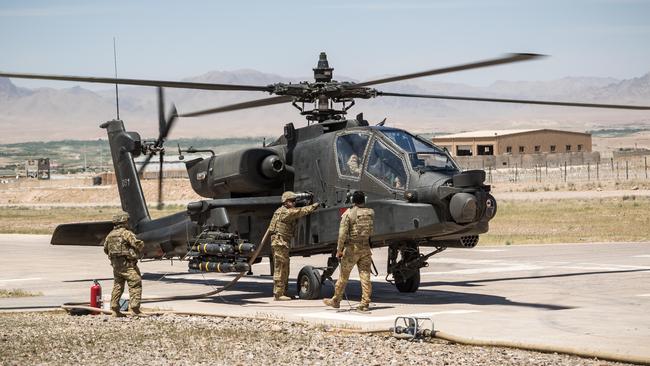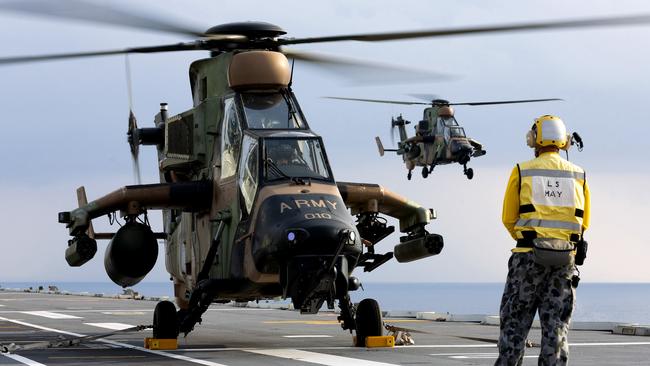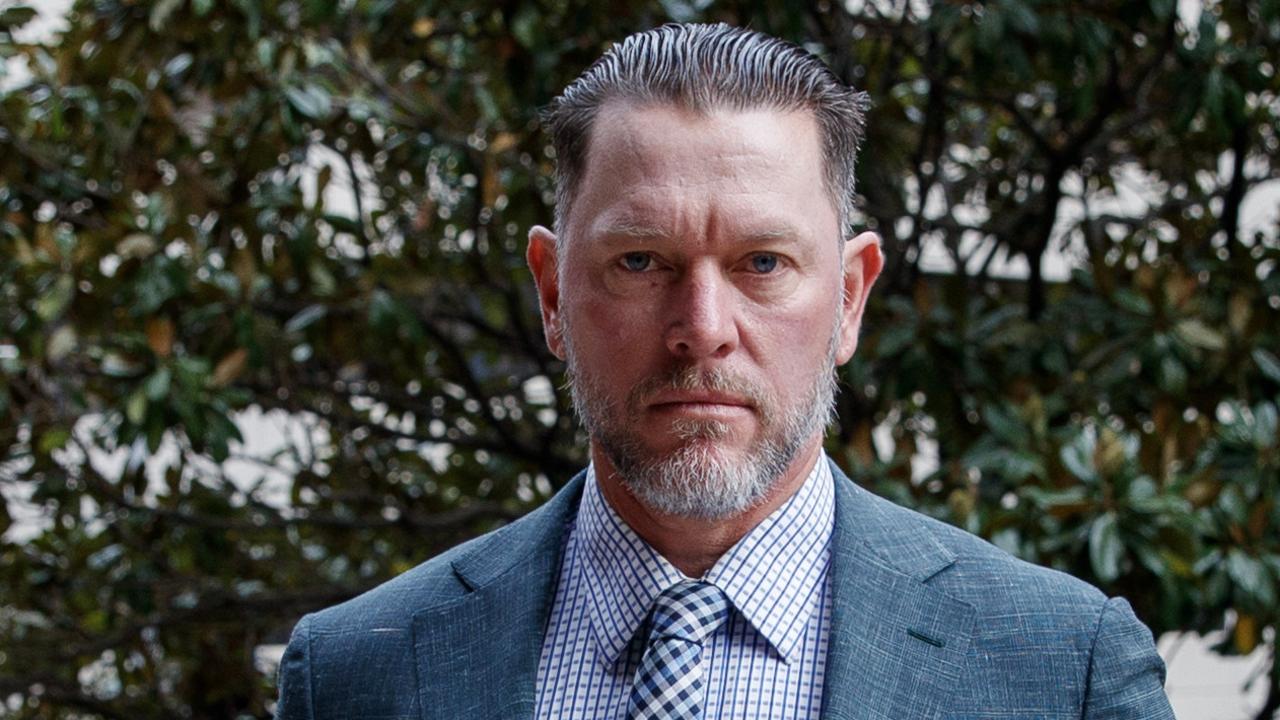‘Diggers’ choice’ Apache wins chopper deal
Defence to dump ARH Tiger armed helicopters and replace them with the more hi-tech American Apache Guardians.

Defence is moving to dump the trouble-prone ARH Tiger armed helicopters and replace them with the more lethal, hi-tech American Apache Guardians — considered to be the “Diggers’ choice”.
Defence Minister Linda Reynolds on Friday will reveal the Morrison government has approved the purchase of 29 of Boeing’s Apache AH64E — flown by the US and 15 other countries — and it will become the ADF’s replacement helicopter from 2025.
The major military move comes days before the new Biden administration takes over. It also ensures the new aircraft will work seamlessly with that of Australia’s closest strategic ally.
“The Apache Guardian is the most lethal, most survivable and lowest-risk option, meeting all of Defence’s capability, through-life support, security, and certification requirements,” she said.
Since they started operations, the European-designed Tigers have experienced recurring problems ranging from pilots being gassed by fumes in the cockpit, rocket launcher pods falling off, inadequate rocket sights and compatibility issues with communication systems.
The government had been considering whether to upgrade the army’s 22 Tigers — which are also flown by France, Germany and Spain — and purchase an additional seven second-hand airframes because the European aircraft is no longer in production.

It has now decided to replace the fleet entirely with the Apache Guardians.
Senator Reynolds said the government had “learnt lessons” from issues with the Tigers and had opted for a “proven and mature” replacement.
The Department of Defence had considered a number of helicopters against the key criteria of “proven ability, maturity and an off-the-shelf operating system”.
Senator Reynolds said the Apaches would be equipped with improved sensors, communications suites, attack capabilities and improved survivability.
“This new ARH (armed reconnaissance helicopter) capability will strengthen Australia’s armed reconnaissance force to better shape our strategic environment and deter actions against our national interest,” Senator Reynolds said.
The purchase approval comes just months after Scott Morrison struck a historic defence agreement with Japan that will be critical to underpinning security in the Indo-Pacific as China adopts an increasingly aggressive stance.
Liberal MP Andrew Hastie, a former SAS captain who also served with the 2nd Cavalry Regiment and was recently promoted to Assistant Defence Minister, previously told The Australian the Tiger had been an “unmitigated disaster” and pushed for an American alternative.
“Over my eight-year period with the 2nd Cavalry Regiment and SASR as a tactical commander, we never once had a Tiger fly in support of training or operations.”
His political colleague Phillip Thompson, an Afghanistan veteran, has also thrown his support behind the US aircraft.
“On the battlefield, when it’s gone bad and you need air support, no one has ever closed their eyes and wished for the underperforming Tiger,” he said.
“The battle-tested Apache is what the Diggers want and what is needed. In Afghanistan, we didn’t operate our attack helicopter, the Tiger, because we couldn’t get parts and they don’t integrate with our coalition partners. Guess what was used? Apache.”
Senator Reynolds said the new helicopter fleet would also signal fresh opportunities for domestic industry through logistics support, warehousing services, training development, engineering services, maintenance and repair.
“The project will deliver on the government’s vision to maximise Australian industry involvement in defence capability,” she said.
The maker of the Tiger, Airbus Helicopters, had pushed for the aircraft to be extended until 2040.
The Defence Annual Report 2019-20 estimated the cost of sustainment for the Tigers to be about $145m. However, the Tigers never achieved the level of flying hours or capability envisioned when they were purchased.
Their cost per flying hour is estimated to be $34,000 — more than double that of its American rivals, with the Tiger flying 42 per cent fewer hours than budgeted for over the past four years.
The Australian understands the cost of the new Apache fleet is yet to be finalised.




To join the conversation, please log in. Don't have an account? Register
Join the conversation, you are commenting as Logout